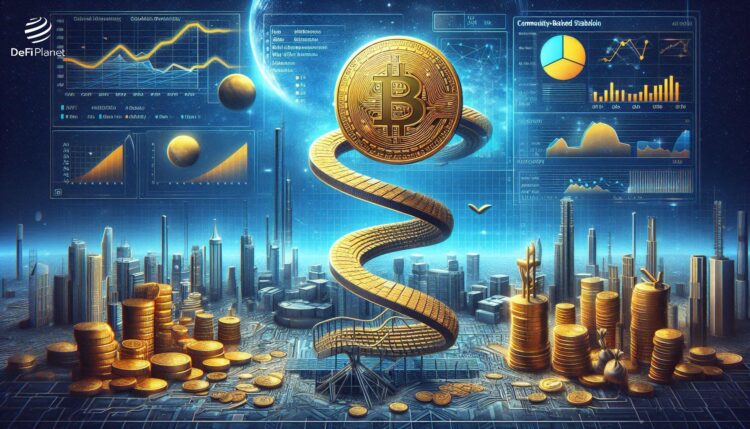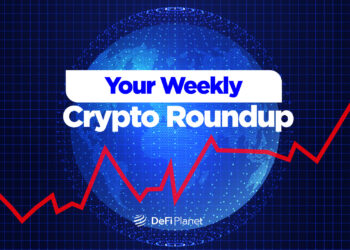The rise of commodity-backed stablecoins this year has captured quite some attention, especially as an alternative to fiat-backed stablecoins and the volatile broader crypto market. As of August 1, 2024, their total market capitalization reached $1.3 billion, led by Tether Gold (XAUT) and PAX Gold (PAXG), which account for 78% of the market. The sector has grown significantly, up 212x since 2020 and 18.1% in 2024.
XAUT reached its peak price of $2,604.71 on September 18, 2024. As of that date, the stablecoin led market with a capitalization of $634 million, while Paxos Gold (PAXG) follows as the second-largest gold-backed token, boasting a market cap of $488 million.

Why are commodity-based Stablecoins becoming popular?
These stablecoins are pegged to real-world assets such as gold, oil, and even agricultural products. Naturally, they offer investors easy exposure to commodities without the complexity of managing physical assets and a more stable store of value compared to fiat-pegged counterparts.Their value is directly tied to the fluctuating prices of their underlying assets, allowing them to track market movements more closely than fiat-backed stablecoins. However, their newfound popularity has been fueled by growing concerns over inflation and fiat currency devaluation, especially in emerging markets.
In regions grappling with geographical tensions, inflation, and currency instability—such as Asia, the Middle East, and other emerging markets—the adoption of commodity-backed stablecoins is becoming increasingly prevalent. For instance, Paxos’ gold-backed digital asset saw its PAXG token price soar to an all-time high of $2,923 in April 2024, driven by escalating tensions in the Middle East.

Gold-backed stablecoins typically increase in value during inflationary periods, given gold’s historical role as a hedge against inflation. Oil-backed stablecoins like Venezuela’s now-defunct Petro, on the other hand, follow crude oil prices and are subject to the same geopolitical and supply chain risks that affect the oil market. This direct connection to real-world assets lends commodity-backed stablecoins a layer of stability that fiat-backed stablecoins often lack due to their exposure to inflation and regulatory intervention in traditional currency markets.
Can Commodity-based Stabelcoins Outcompete Fiat-based Ones?
Despite their rising popularity, commodity-backed stablecoins still account for only 0.8% of the overall stablecoin market.
This space remains dominated by fiat-pegged stablecoins, which saw explosive growth during the 2020–2021 bull run, where market capitalization surged by over 3,000%. However, following the collapse of Terra’s UST stablecoin in 2022, the market experienced a significant decline. By November 2023, the market began to recover, and by August 2024, fiat-backed stablecoins had grown 35.4%, reaching a total market capitalization of $161.2 billion.

Commodity-backed stablecoins aim to offer better stability during inflationary periods compared to fiat-backed ones, but they are still subject to market fluctuations in the commodities themselves.
While precious metals like gold remain the preferred commodity backing for stablecoins, there have been attempts to diversify. Projects like Uranium308, which launched a stablecoin pegged to uranium, briefly gained attention but eventually became inactive, illustrating the challenges of launching non-traditional commodity-backed assets.
Table: Commodity-Backed vs. Fiat-Backed Stablecoins
| Feature | Commodity-Backed Stablecoins | Fiat-Backed Stablecoins |
| Backing Mechanism | Backed by physical commodities (gold, oil) | Backed by fiat reserves (USD, EUR) |
| Volatility Protection | Offers protection against currency devaluation; sensitive to commodity prices | Protects against crypto volatility; relies on central bank stability |
| Stability | More stable during inflationary periods but exposed to commodity market fluctuations | Generally stable if backed by strong fiat, but vulnerable to inflation |
| Adoption in Emerging Markets | High due to inflation hedging properties | Commonly used for cross-border payments, but less appealing during high inflation |
The True Value of Stablecoins
Many argue that stablecoins, particularly fiat-backed ones, are merely digital representations of existing currencies and not “true” decentralized assets like Bitcoin. On the other hand, commodity-backed stablecoins appear to offer more intrinsic value due to their linkage to real-world assets, but is this value solid?
The true value of commodity-backed stablecoins depends largely on the reserves they claim to hold. For instance, stablecoins backed by gold may sound attractive, but without transparent and regular audits of reserves, their reliability is questioned. Additionally, the liquidity of these commodities can affect the ability of issuers to redeem tokens promptly during times of market stress.
Moreover, the value of commodities can also be volatile. Gold, while traditionally stable, can still fluctuate due to global demand, supply chain disruptions, or geopolitical events. Oil-backed stablecoins are even more prone to value swings based on market cycles and economic growth.
For example, after experiencing a series of value fluctuations, Venezuela’s Petro stopped trading on major exchanges in 2023. The situation worsened, leading to the token’s official shutdown on January 15, 2024, at which point any remaining holdings were liquidated. In this sense, the stability these coins promise can be an illusion when broader economic forces come into play.
While transparency and regular reserve audits could boost confidence, the inherent risks tied to commodity price volatility make these stablecoins susceptible to value fluctuations, highlighting the illusion of stability they offer compared to fiat-backed stablecoins.
Disclaimer: This article is intended solely for informational purposes and should not be considered trading or investment advice. Nothing herein should be construed as financial, legal, or tax advice. Trading or investing in cryptocurrencies carries a considerable risk of financial loss. Always conduct due diligence.
If you would like to read more market analyses like this, visit DeFi Planet and follow us on Twitter, LinkedIn, Facebook, Instagram, and CoinMarketCap Community.
Take control of your crypto portfolio with MARKETS PRO, DeFi Planet’s suite of analytics tools.”



















